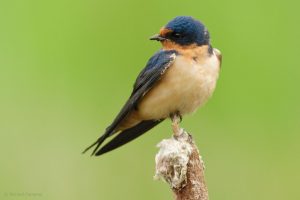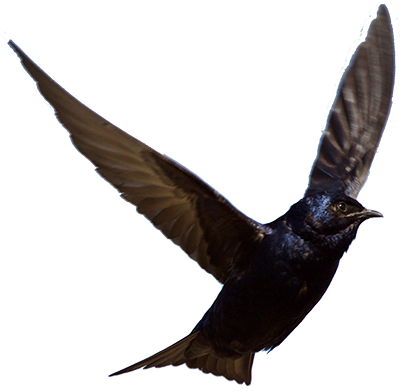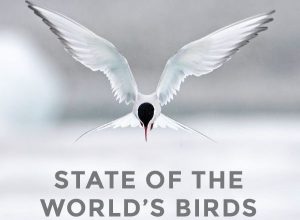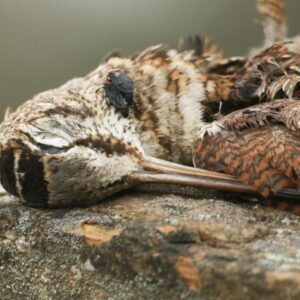Nature Canada’s Thoughts on the State of the Birds Report

Ted Cheskey, Naturalist Director.
This blog was written by Ted Cheskey, the Naturalist Director at Nature Canada.
BirdLife, the global authority on the status of birds, and the global leader for bird conservation, recently published its State of the World’s Birds, five years after the previous State of the World’s Birds was released at the Global Congress of BirdLife International in Ottawa. As Canadian co-partner of BirdLife, it behooves Nature Canada to share some of the key findings and messages of this landmark report.
This is a serious document that is chalk full of valuable information on the state of the world’s birds. North American birds receive little attention compared to the avifauna of the rest of the world, and that is fine. The report is structured as a story-telling document, with a narrative starting with the value of birds, and diving deep into the threats and problems facing them, and concluding with a review of the important tools and initiatives needed to turn around the fortune of our feathered friends. Each section has multiple case studies to provide examples in support of that particular part of the narrative. Here are some of the highlights from my reading:
There are more species now then before even though they are going extinct at a faster rate. That seems counterintuitive, and but here is the scoop. The science of taxonomy is rapidly evolving and what we once may have considered as one species, in some cases, we now recognize a dozen. You get the picture. So if 5 of that dozen go extinct, we still end up with 7 species where before we had one. So the number of species on earth is 11,121 based on the 2016 “Checklist of the Birds of the World,” meaning that the number of species counted in previous approaches was about 10% lower than it really is, according to current science.
So about extinction – as many as 183 species “may have been lost” in the last 500 years. What doesn’t bode well is that about 40% of all bird species are currently in decline whereas only 7% are increasing while the remainder is stable. 2486 species are globally threatened or near-threatened. This is where I noticed a few familiar names on the list – Snowy Owl, Atlantic Puffin and Black-legged Kittiwake – common species in parts of Canada. They have all been up-listed to “Vulnerable.” Yikes!
Agricultural expansion and intensification followed by logging, and invasive species ranked as top three threats to birds. Intensive agriculture impacts 1091 globally threatened species, logging affects 734, and invasive species threatens 578. Neonic pesticides, widely used in agriculture in Canada still are mentioned in one of the case studies as a contributing factor to grassland species declines. We know that they are impacting aerial insectivores also (not just bees). Nature Canada recently did a national campaign on neonics, calling on the Canadian government to ban them.
Logging is a huge threat that impacts the forest birds in Canada, but which is much more acute in their tropical wintering areas. In the case study on logging, a graph shows that South America holds most of the world’s forest-dependent bird species – not surprising, as we know that Amazonia is the lungs of the earth.
Invasive species impact is most acute on islands and for island-restricted bird species. Seventy five percent of the globally threatened species on islands are mainly threatened by invasive species like mice, rats and cats, whereas only 13% are impacted by invasive species on continental landmasses. Rats and mice are the biggest problem, threatening 250 species, following by cats at 202 species. Nature Canada knows the cat issue well and recognizes that feral cats on islands can devastate small animal population. Most of the bird extinctions associated with cats have been island restricted bird species. For more information on our campaign to keep cats safe and save bird lives visit www.catsandbirds.ca.

Barn Swallow, Richard Cameron.
Another human-associated threat that takes a huge toll on seabirds is fishing gear. Gill nets kill about 400,000 seabirds annually whereas longline hooks kill around 160,000. One hundred and ninety three species of seabirds are impacted and threatened by industrial-scale fishing.
Finally climate change is portrayed as the elephant in the room, exacerbating many of the other threats and adding considerable uncertainty. More species, about twice as many, will be negatively impact by climate change than positively impacted, according to BirdLife’s analysis of birds in North American and Europe.
In the section on solutions, a few things rise to the surface that resonate with me, and with what we need to do here in Canada and in the Americas.
- Protect IBAs. In Europe, BirdLife partners have done a good job of getting official legal protection for IBAs as Special Protected Areas. Protection has increased from 23% in 1993 to 70% in 2016. Compare that to Canada’s 35% protection of IBAs in 2016, and you can see that we have a long way to go. We hope that the Federal Government’s commitment to the Pathway to Target One – to protect at least 17% of terrestrial and 10% of marine habitat will prioritize IBAs which collectively account for less than 3% of the land cover. We should include as part of our Target one commitment as commitment to legally protect over two-thirds of our IBAs in Canada.
- Recover species at risk. BirdLife has many examples in their case studies of how a committed group of people saved a species from extinction. We have experienced that in Canada ourselves with the Whooping Crane and to an extent, the Kirtland’s Warbler. But the list of threatened bird species continues to grow in Canada, doubling from 47 to 94 between 2001 and 2018. The federal government needs to show better leadership in species at risk recovery by timely listing decisions and more concerted multi-species project recovery support. There also needs to be an investment in international conservation as many of the threats to birds that breed in Canada occur in the tropics or on their migration paths.
- BirdLife partners in Cambodia are showcased in one of the 50+ casestudies, in terms of producing a “wildlife friendly’ rice that supports five critically endangered bird species. Nature Canada promotes “bird friendly coffee” consumption in Canada to support the Canada Warbler and many other bird species on their tropical wintering grounds, reminding Canadian coffee drinkers that their choice of what coffee to consume can positively or negatively impact the birds that are here. We are also initiating a project in Ontario to work with farmers to develop beneficial practices for birds on the farming landscape.
The report ends with a call to support the sustainable development goals of the United Nations. While sobering in its analysis, I finished reading the State of the World’s Birds feeling hopeful from all of the amazing case studies of people making a small difference that adds up to a big difference. Change starts locally, and we all have the ability and reason to be part of positive change for our birds and nature.
Ted Cheskey
Please consult the following for more information on the state of birds in Canada.
One in eight bird species threatened with extinction, global study finds in the International Edition of the Guardian.

Want more nature news?Join our 80,000 nature lovers raising their voices for nature! |




